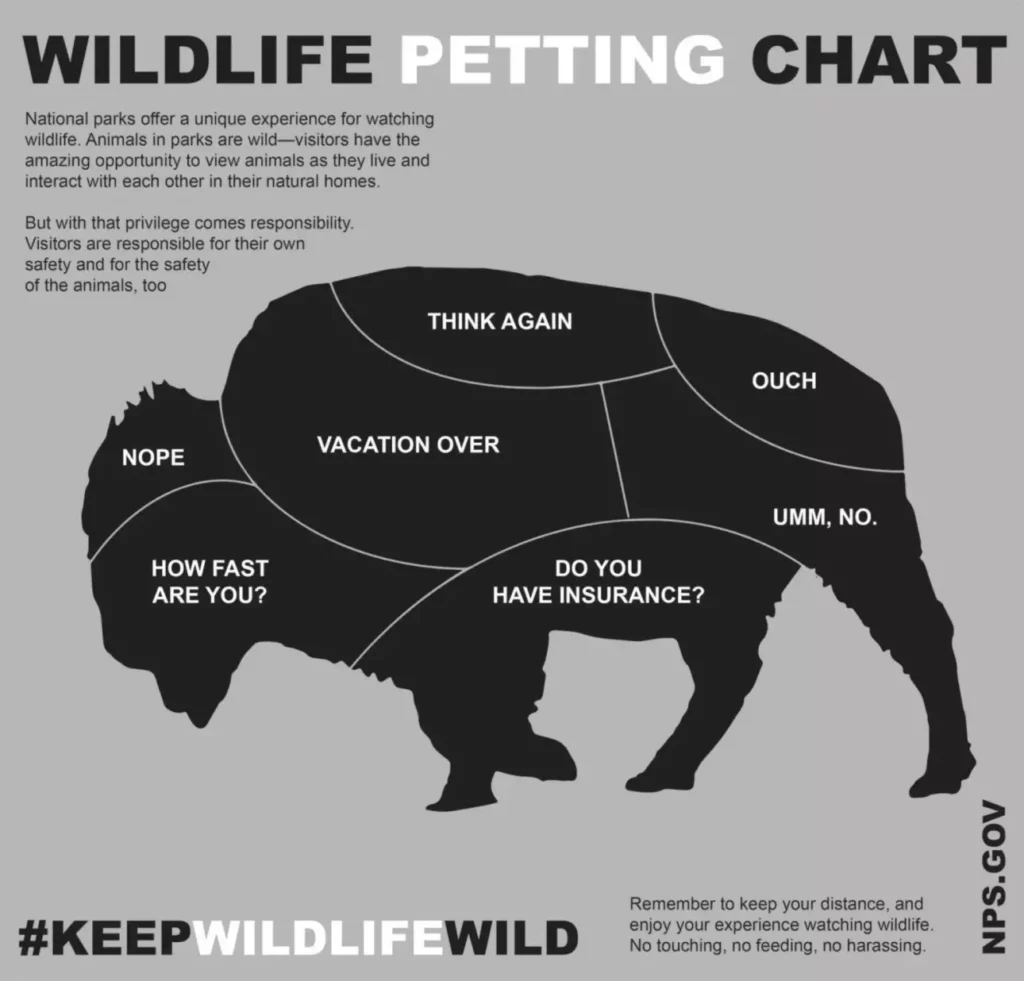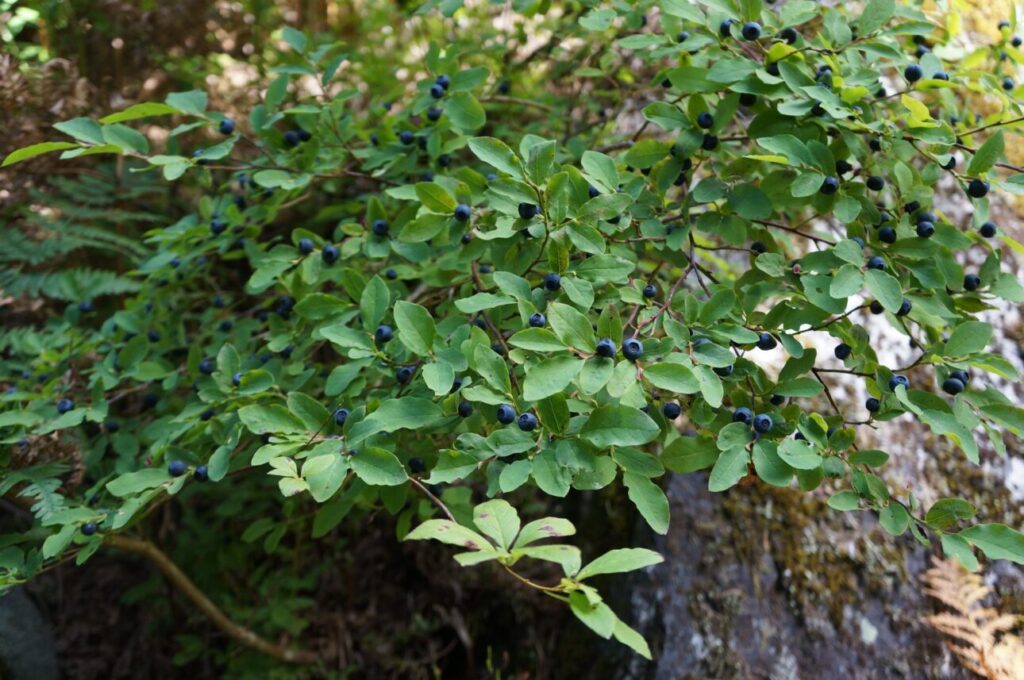Safety Around Wildlife for their Protection and Yours
Spring and early summer bring the CUTEST newborn wildlife to Jackson Hole. Bison calves, fawns, cubs, and other big game wildlife can be found in all corners of Teton County. While these animals may look cute and cuddly, it is essential that we maintain our distance on our trails. Do you know the rules for maintaining safety around wildlife?
If you’re on a long scenic hike in Grand Teton National Park or driving down a road in the Bridger-Teton National forest to get to a trailhead, it is essential that you know how to safely, responsibly, and ethically view wildlife.

When humans interfere with wildlife they can inadvertently cause their death
While Bison calves may look like giant stuffed animals, they are in fact WILD. Big game animals are unpredictable and dangerous—especially mamas in the springtime. You may have heard on the news about stories of visitors who picked up a bison calf and put it in their car because it “looked cold” or attempted to rescue a calf from the river because it “may have been drowning.” Now while these interventions may seem like the compassionate thing to do—the reality is the exact opposite. Both of these news stories resulted in the bison herd rejecting the calf. Authorities were forced to euthanize these calves and the people responsible for approaching wildlife (which is illegal) were reprimanded and fined.
In addition, approaching wildlife is not only harmful to them—you could be seriously injured or killed. Moose, bison, and elk may look cool, calm, and collected when you encounter them. In reality, they are still wild animals that can be easily triggered and charge you in a moment’s notice. Did you know that moose can run up to 35 miles per hour? Whew. That’s much faster than we can move. Even big burly bison can run 35 mph. In comparison, the fastest human sprinter, Usain Bolt, ran approximately 27 ½ miles per hour. Even the fastest olympian can’t outrun our wildlife.
So how can you safely view wildlife on our trails? Here are a few of our favorite tips:
- Use the rule of thumb to keep a safe distance: If you’re near wildlife, stick out your thumb. Cover the wildlife from view with your thumb. If the animal isn’t completely covered by your thumb, then you’re too close and need to slowly back away.
- Always maintain at least 100 yards from bears and wolves and 25 yards from other wildlife: Use a spotting scope, binoculars, or large lens if you want a better view.
- Talk to the authorities about your concerns: Let’s say that you saw a shivering bison calf. It’s okay to be worried about an animal—just not okay to pick it up or approach it. Call the local big game authorities and they can come assess the situation. If you’re out of service, make a note of where the wildlife is, go into service, and then contact the authorities.
- Be alert on the trails: One of the best ways to keep a safe distance from wildlife is being alert. Take your airpods out so that you can hear wildlife and look up as you hike. It can be tempting to always look at your feet while hiking on rocky trails but try to consistently look at your surroundings.
- Don’t feed wildlife: This applies to all wildlife (squirrels, foxes, birds)—not just big game. Plus, it’s illegal.
- Stay in your car: If you’re driving and spot some wildlife, stay in your car. Animals tend to be less threatened by vehicles than a person walking around. You reduce your chances of being harmed and the animals are kept safe—a win-win!
- Don’t tease or frighten wildlife: This seems like common sense but some people want a reaction out of animals. If your actions cause an animal to change its behavior then you are too close.
Thank you for respecting our wildlife! We can both enjoy our trails this summer AND encounter wildlife from a safe distance. Together, we protect what makes Jackson Hole so special.



